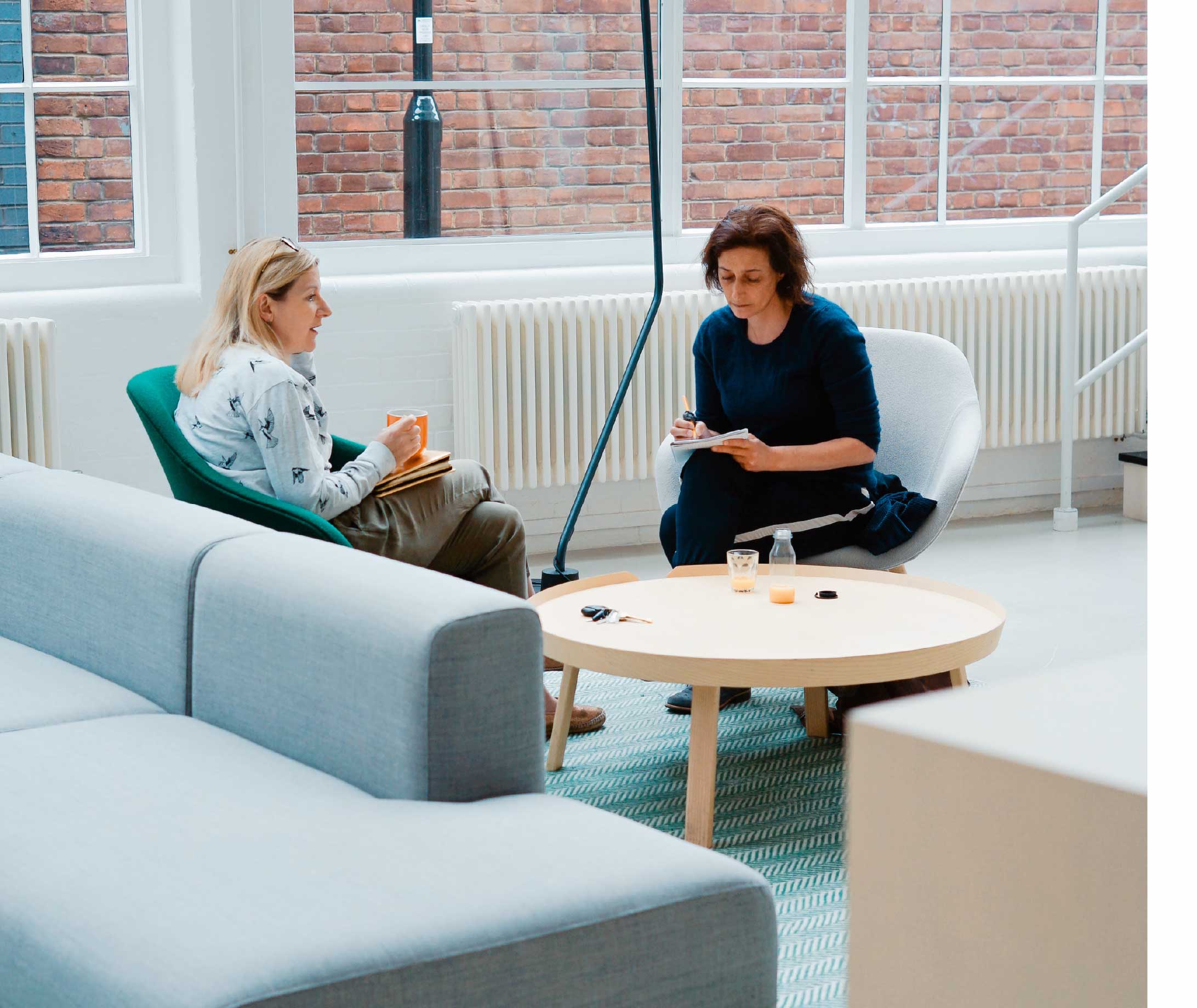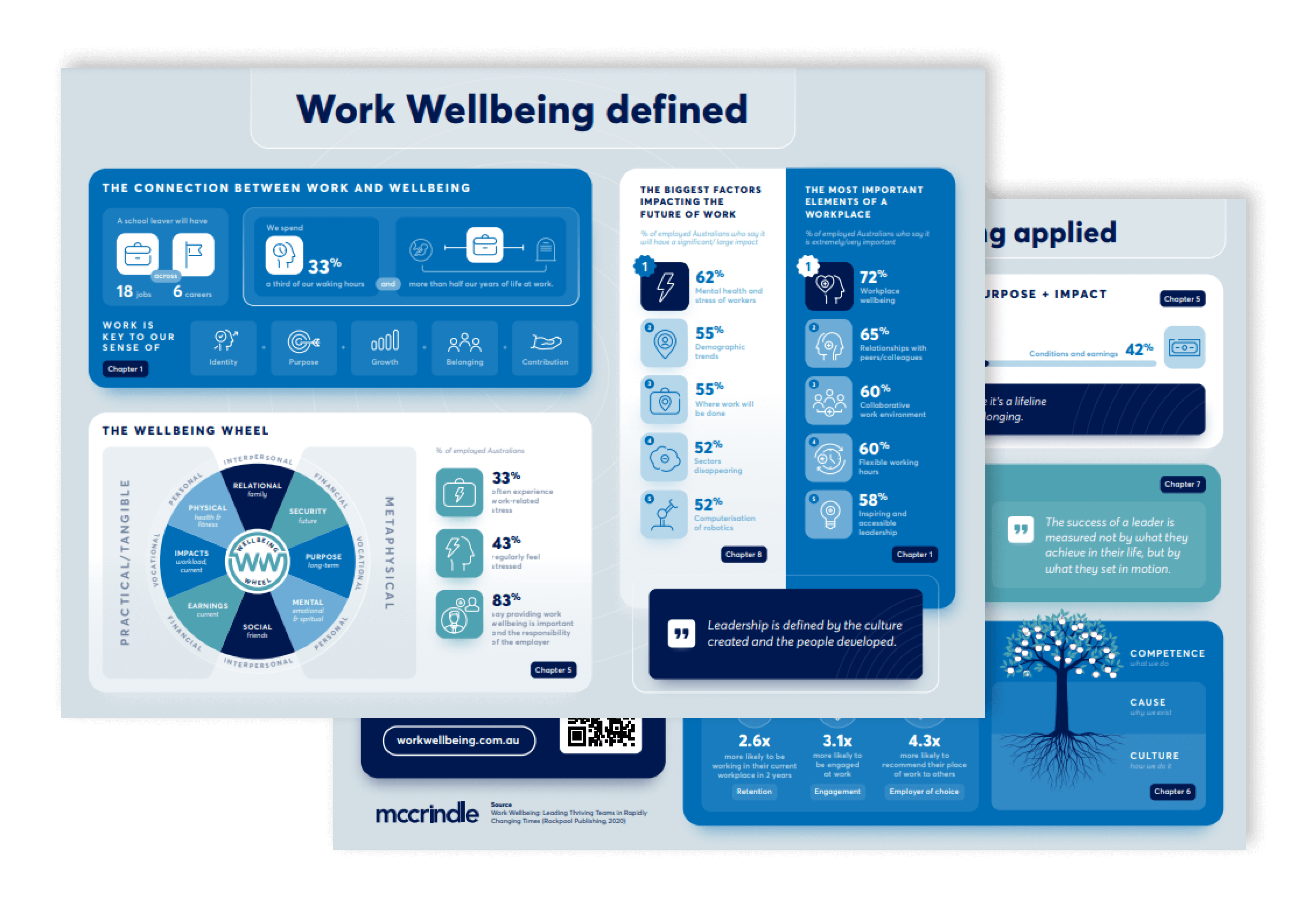Work Wellbeing
Creating unity in flexible-working teams

The relationships we have with others at work are a significant and contributing factor to employee engagement. In our worker survey that we conducted for our book Work Wellbeing: Leading thriving teams in rapidly changing times, more than three in five workers (65%) said ‘relationships with peers/colleagues’ is important in their place of employment. This was only second to workplace wellbeing (72%). The ability to interact socially and work collaboratively was also considered important among workers (60%).

The future is working flexibly
A few years ago, we conducted research into the concept of teleworking, which together with telecommuting are concepts that have been around since the early 1970s. At a time when flexible working conditions were beginning to emerge as an important must-have offer for organisations, we decided to investigate how workers felt about the concept of working
remotely rather than commuting to a central place of work such as an office building, site, warehouse or store.
Our research at the time found that Australians were eager to make significant changes to their working styles and wanted to embrace the freedom to work from home or remotely to their primary location of work. Four in five workers (80%) stated they would be more likely to stay longer with an existing employer should that employer provide them with the flexibility of working remotely or from home. More than half (52% of men and 51% of women) said they would be prepared to forgo a percentage of their pay in exchange for greater flexibility in their working arrangements.
Fast forward to today and, due to COVID-19, flexible work and work-from-home has become a daily reality for more workers than ever before. Our latest research shows that the future of work is likely to be hybrid, with three in five Australians (61%) looking for a degree of flexibility in their working arrangements – with a mix of working from home and in the office or workplace. Of this 61%, 33% is made up of those who prefer the majority of time spent working from home with employees coming to the office for meetings/project collaboration. The other 28% see the ideal as when everyone works together in the same place most of the time, with one to two work from home days a week.

Flexibility is important, yet our research shows that people do want and need the connection, collaboration and community that comes from working with other people. The majority of Australians value the group collective, stating the importance of promoting the best team outcomes and setting aside times for gathering and brainstorming. Our research has shown that workers believe the culture and output of a workplace is best when everyone is working in one place with a degree of flexibility for working from home, or when there is a time for gathering and working together but also a significant time for working remotely.
How to create unity in flexible working environments
The future of work will incorporate more working-from-home, with colleagues working together from separate locations. In some cases, people may work together daily, but never have met in person. So, how can leaders and colleagues work to create unity among these flexible working styles?
1. Focus on the culture
It is a leader’s role to be aware of the culture that is created in an organisation. Be aware of the way people interact, the mood and tone of the environment and consciously try to lead it in the direction you want it to go. While it’s a leader’s responsibility to do this, any employee is able to positively contribute to the culture of an organisation, so if you see an opportunity to make a positive impact, take it – regardless of your role!
2. Create moments to celebrate
When teams celebrate alongside one another, people feel valued for their contribution and are therefore more likely to be motivated and engaged in their work. These moments might happen organically when in an physical workplace, so look for these moments when working remotely and make sure everyone is included in the celebrations as much as possible, even when everyone isn’t working in the same physical space.
3. Incorporate fun and the incidentals
One thing that is lost when people work from home or remotely, is the incidental moments of connection and fun that happen organically. These moments might occur when making a cup of tea, having a stretch break or when someone says something funny and everyone stops to laugh. In the moment, these might not seem overly significant, but they are powerful moments of building connection with people. Using technology, think of creative ways to facilitate these moments – it could be playing games at lunch time, utilising group chats or hosting virtual drinks. Anything that helps colleagues to connect outside of work-related tasks can facilitate this.





